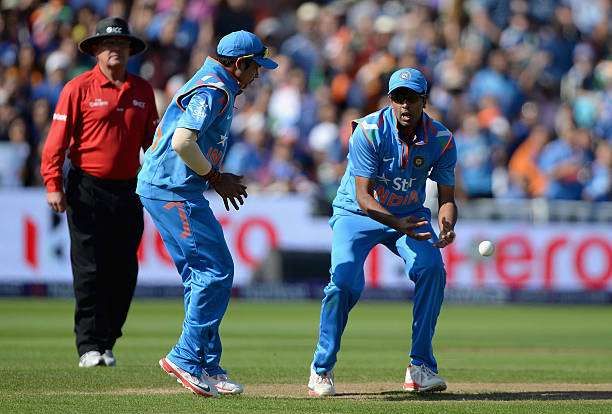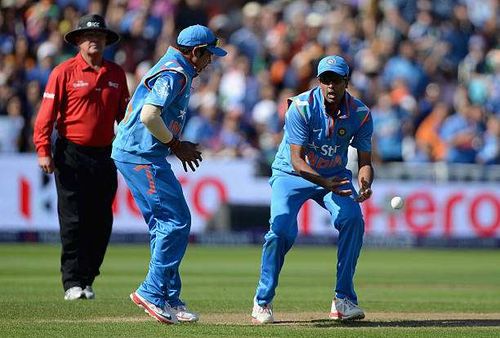
Ramakrishnan Sridhar discusses the mantra to India's fielding success

What’s the story?
Ramakrishnan Sridhar, India’s fielding coach, spoke out about the high standards set for India in the field, his coaching methods and the man-management required to build a successful fielding outfit over time. His calm and level-headed approach speaks volumes about India’s character on the field, and is exemplified by his motto, “You give what they want till the time they begin to take what you want to give them.”
In case you didn’t know…
Sridhar, a former bowler for Hyderabad, has worked with many teams in his 10-year coaching career. He coached youth teams for Hyderabad, working with the NCA and was appointed India U19’s fielding coach in 2011.
2014 was a breakthrough year for the coach, and stints with Kings XI Punjab and Andhra Pradesh (as head coach) yielded a series-long fielding coach stint with the national team, that has subsequently been extended till present day.
The details
In an interview with Hindustan Times, Ramakrishnan Sridhar addressed working with older and less agile members of the team. He explained how it took Mohammed Shami six months to pick up the art of outfielding, and explained the many ways in which the team deals with Yuvraj Singh’s waning athleticism.
He said that positioning was key, and went on to demonstrate the importance of a healthy coach-captain relationship. He said that Virat Kohli is made aware of the poorer fielders in the side, and takes measures to slot them in easier positions. Sridhar also stressed the importance of fitness for players, both for longevity of their careers and fielding.
Extra cover: 5 catches that changed Indian cricket forever
In the Champions Trophy, apart from some of the run outs that India affected, the fielding was generally abysmal. Kedar Jadhav put down a sitter in the first game, amongst numerous other mistakes throughout the campaign, and Yuvraj Singh let balls through his feet in the last game.
India have come leaps and bounds on the field in the last decade or two, but it seems that they won’t be amongst the best fielding units till the team irons out the finer details, something Sridhar will be well aware of.
What’s next?
India’s tours to the West Indies and Sri Lanka might provide some wet outfields, an area where they faced immense difficulty in England. R Sridhar’s next challenge will be to groom the next wicketkeeper, for when Dhoni retires, as well as to make sure the weaker members of the fielding unit, Shami, Bumrah, Jadhav, get the proper attention.
As for India’s fielding, it is imperative that every first-class cricketer in the country is able to field at the international level, and it should be a key area for selection. This will prevent the fielding coach from having to teach the basics to international players, which is a waste of time. Furthermore, it would reduce the vast discrepancies in the fielding quality within the Indian team itself, allowing the fielding coach to work on the finer details rather than basics.
Author’s take
India’s fielding has come a long way, but this comparison, of India in the 80s and 90s, when the country’s facilities lacked the grass needed to practise fielding, is a flawed one. Not only does India need to set its standards high, but also need to stop making mistakes.
The number of missed run outs, extra runs given on the field and dropped catches is far more compared to nations like South Africa, Australia, New Zealand and England. India need to cut out the mistakes, and R Sridhar has to take a harder line with players who are making these mistakes, despite the fact that the problem lies in first class cricket.